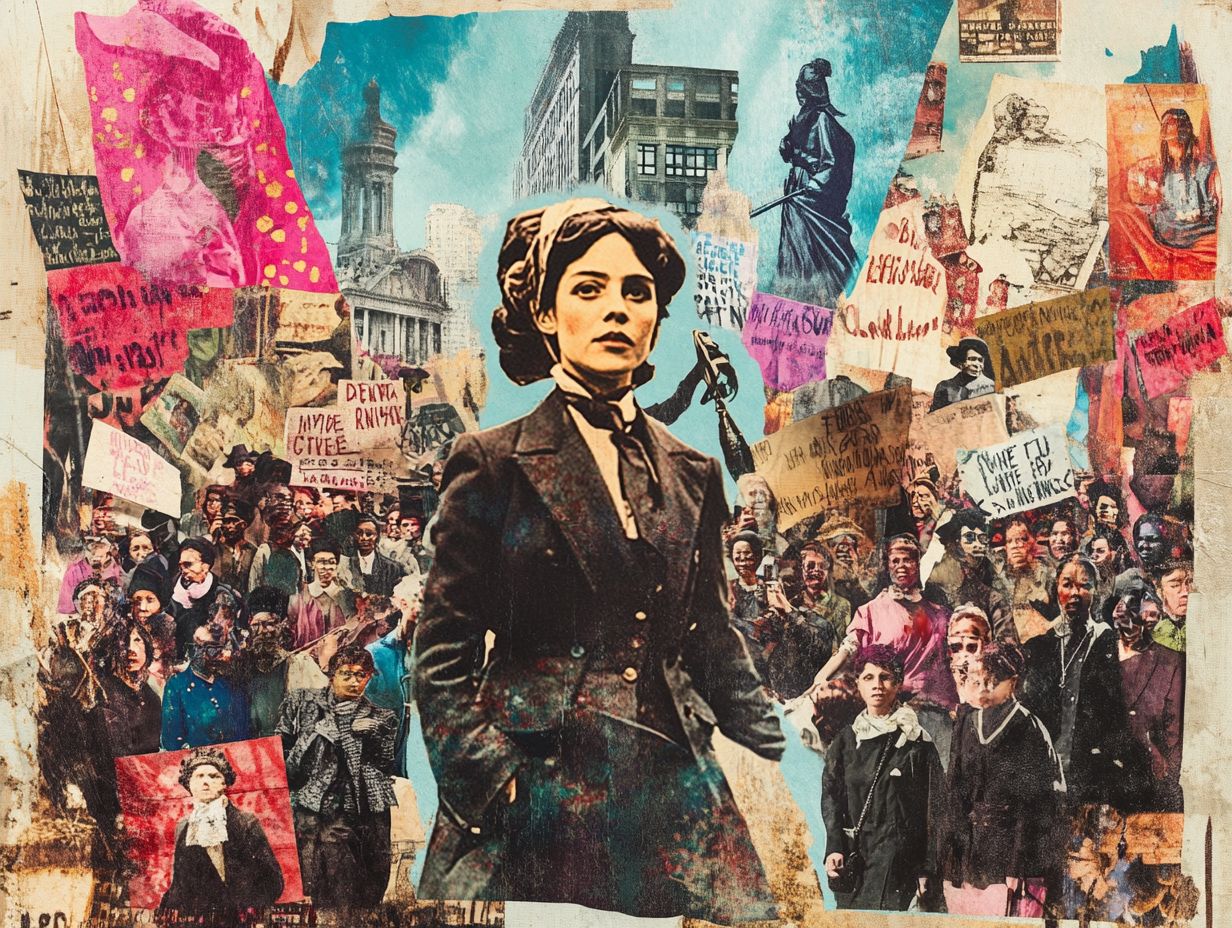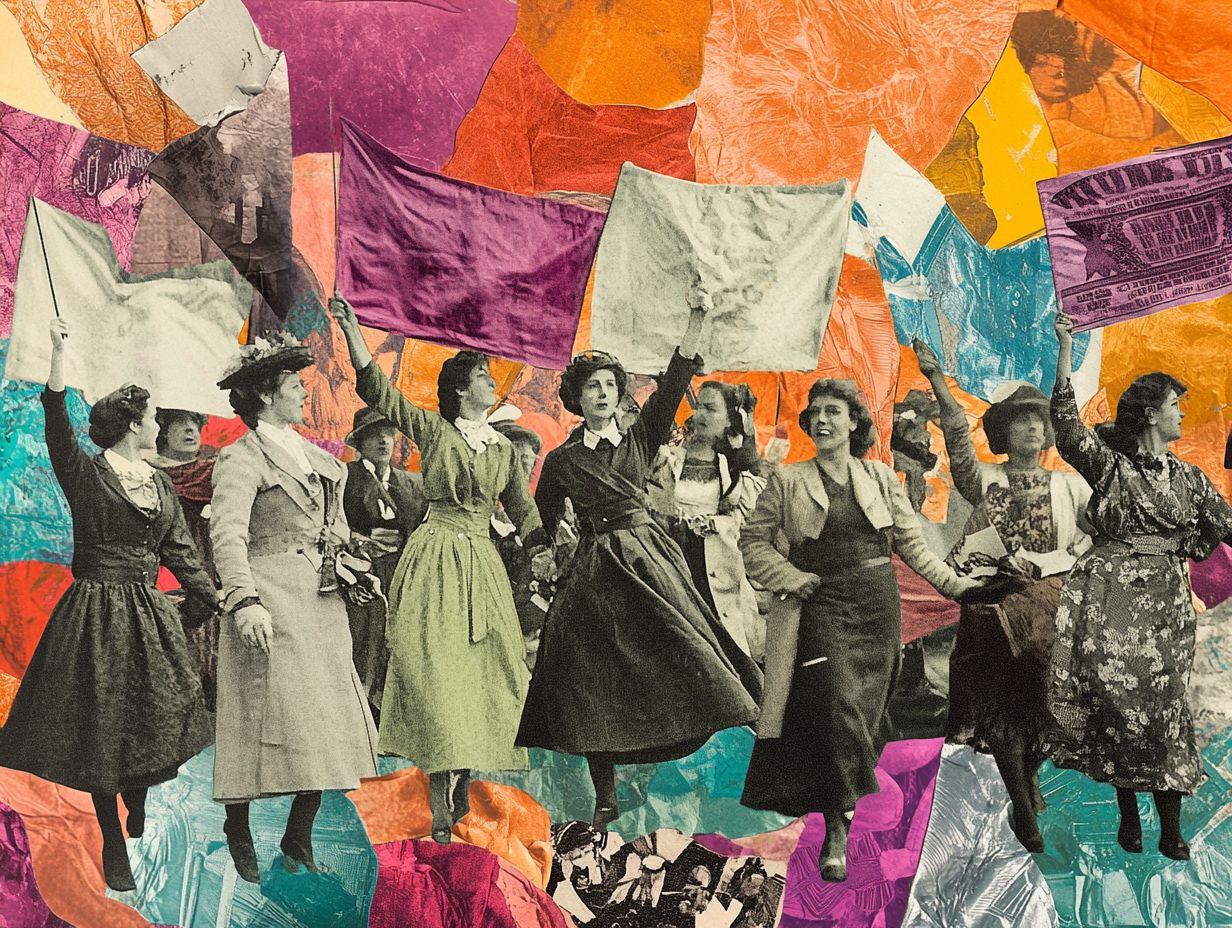The fight for women’s rights has been a long and challenging journey, characterized by significant struggles and remarkable triumphs throughout history.
This article explores key moments that have shaped the landscape of gender equality, highlighting the challenges women have faced, including discrimination and inequality. It also celebrates major achievements, such as landmark laws and movements that have advanced women’s rights.
As we examine the current state of affairs, we reflect on ongoing issues and envision a future where gender equality can flourish. Join us in uncovering this vital narrative, which continues to evolve today.
The Fight for Women’s Rights Throughout History

The fight for women’s rights throughout history represents a significant struggle that has shaped the sociopolitical landscape and laid the groundwork for modern movements advocating equality and social justice.
Women have fought for their rights since ancient times, but major movements such as the women’s suffrage movement and the women’s liberation movement have acted as catalysts for social change. These movements have challenged the patriarchal institutions that have historically oppressed women.
From the early struggles for women’s voting rights and the ability to hold public office to contemporary campaigns for reproductive health, economic rights, and workplace equality, this struggle persists today as efforts continue to preserve women’s legal rights and mobilize future generations.
Key Moments in the History of Women’s Rights
Key moments in the history of women’s rights represent significant turning points in the struggle for gender equality, particularly within the suffrage movement that aimed to secure voting rights for women.
Landmark events such as the Seneca Falls Convention in 1848 and the ratification of the 19th Amendment in 1920 were instrumental in mobilizing women to advocate for their civil rights and political representation.
These pivotal moments not only raised awareness about gender disparities but also spurred ongoing activism, as demonstrated by events like the Women’s March on Washington in 2017, which highlighted contemporary equality issues.
Foundational figures such as Susan B. Anthony and Elizabeth Cady Stanton laid the groundwork for future generations. Legal milestones like the Equal Pay Act of 1963 and Title IX in 1972 further advanced the movement, expanding the focus on comprehensive rights.
The collective efforts of these activists and legal achievements ultimately transformed society, enableing women to pursue not only suffrage but also educational and workplace equality.
Challenges Faced by Women in the Past

Throughout history, women have faced systemic gender discrimination and patriarchal oppression, which have significantly limited their rights and freedoms in various areas, including education, employment, and reproductive rights.
These barriers have hindered women’s access to equal treatment in the workplace and contributed to a cycle of inequality that restricts their participation in society and politics.
Discrimination and Inequality
Discrimination and inequality have manifested as gender-based violence and restrictive gender roles, which have hindered women’s advancement. Legal rights have often proven insufficient for the protection of women, as discrimination laws historically fail to address the systemic nature of gender discrimination and inequality.
These forms of discrimination not only affect women’s safety and freedom but also limit their access to education, healthcare, and economic and employment opportunities due to the broader economic and social structures that discriminate against women as a category.
In many regions around the world, domestic violence, sexual violence, and female genital mutilation remain prevalent, often socially legitimized or inadequately addressed by legal protections and punitive measures.
Increased awareness of these issues has spurred advocacy efforts aimed at creating legal reforms that enhance the quality of protective legislation and raise awareness of women’s rights. These movements underscore the need for equality and justice, resulting in significant policy changes that enable women and safeguard their human rights.
Major Achievements in Women’s Rights

Significant achievements in women’s rights have fundamentally transformed the world, leading to substantial progress in women’s liberation, workplace rights, and equal pay legislation. Landmark laws, such as Title IX, have played a crucial role in ensuring equal access to education and sports for women and girls.
Additionally, the rise of numerous women’s organizations has been vital in advocating for these rights and amplifying women’s voices.
Landmark Laws and Movements
Landmark laws and movements advocating for women’s rights serve as essential tools for advocates fighting against injustices and inequalities. Legislation such as the Equal Pay Act and the Violence Against Women Act addresses long-standing issues of pay inequality and violence, significantly influencing the historical trajectory of women’s rights in law and public policy.
These movements have directly inspired legal changes while also shifting societal attitudes regarding women’s roles both at work and at home. For example, the increased awareness, mobilization, and grassroots activism surrounding reproductive rights and domestic violence have galvanized public sentiment and contributed to a broader push for gender equality.
A notable example is the Me Too movement, which has raised awareness about the pervasive nature of sexual harassment and prompted legislative reviews and reforms across various sectors, ultimately fostering the need for safer work environments for women.
Current State of Women’s Rights

The current state of women’s rights indicates that, although significant progress has been made, numerous issues still require advocacy to achieve gender equality in areas such as women’s health, political participation, and employment.
Reproductive rights and access to comprehensive women’s health services remain contentious and critical areas that need attention. Meanwhile, the movement for increased representation of women in politics is gaining momentum.
Progress and Ongoing Issues
Despite notable progress in women’s rights, challenges such as gender-based violence, workplace discrimination, and limited access to reproductive health services continue to hinder the movement. These ongoing issues require robust awareness campaigns and effective activism strategies. Cultural shifts that recognize the importance of women’s voices and experiences are essential for driving social change and addressing these persistent challenges.
In recent years, there has been an increasing recognition of the need to enable women across various aspects of life, underscoring the necessity for inclusive policies and community-driven initiatives. While significant strides have been made, it is crucial to focus on intersectionality to ensure that the experiences of marginalized groups are not overlooked.
Activism, both online and in grassroots movements, plays a vital role in raising awareness and instigating legislative changes. Additionally, educational programs that promote respectful relationships and challenge stereotypes are essential for fostering a supportive environment, paving the way for future generations to thrive and overcome existing barriers.
Future of Women’s Rights
The future of women’s rights will rely on the ongoing support of grassroots movements and the advancement of social reform initiatives that prioritize women’s enablement and representation in politics.
As more women take on leadership roles and influence public policy, a concerted effort to dismantle systemic barriers and combat gender discrimination will be essential in shaping the trajectory of women’s rights in the years to come.
Goals and Strategies for Continued Progress
Setting clear goals and implementing effective strategies are essential for the continued progress of women’s rights. This progress can draw on lessons from the history of activism and the successes achieved through community organizing and advocacy groups.
Legal reforms aimed at addressing gender discrimination and ensuring equitable treatment across various sectors must remain a priority for advocates. To achieve meaningful change, it is crucial to learn from historical milestones, such as the suffragette movement, which demonstrated the power of grassroots mobilization.
Today, advocates can employ similar strategies, emphasizing the importance of building coalitions across diverse communities. Successful campaigns like the #MeToo movement illustrate how social media can amplify marginalized voices, fostering a sense of unity and urgency.
Systematic approaches, such as lobbying for policy reforms, providing legal aid for victims of domestic violence, and implementing comprehensive education programs, can create lasting impacts by enableing women to assert their rights and challenging systemic inequalities directly.
